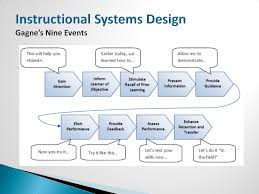 Way back in 1965, Robert Gagné, an American psychologist, formulated The Conditions of Learning. This paper suggested that certain conditions must be present in the learner for absorption and retention of knowledge to occur. He called these conditions the 9 Events of Instruction, based on the factors – both internal and external – that contribute to learning. The internal factors are the learner’s previous knowledge while the external factors include things like the methodology of instruction. You can use knowledge of the 9 Events of Instruction to design training that maximize learner engagement..
Way back in 1965, Robert Gagné, an American psychologist, formulated The Conditions of Learning. This paper suggested that certain conditions must be present in the learner for absorption and retention of knowledge to occur. He called these conditions the 9 Events of Instruction, based on the factors – both internal and external – that contribute to learning. The internal factors are the learner’s previous knowledge while the external factors include things like the methodology of instruction. You can use knowledge of the 9 Events of Instruction to design training that maximize learner engagement..
The 9 Events of Instruction are:
1- Attention-grabbing Introduction.
This is about gaining the attention of the learners in your audience. The introduction can be a compelling story, a really interesting fact or perhaps a question that is unexpected. The idea is to create sufficient interest and motivation for the learner to give full attention.
2- Clear objectives.
This means stating the goals of the training upfront and relating these to the real benefits that the learners will get by attending the training.
3- Link to existing knowledge.
Getting the learners to apply knowledge they have previously acquired gives them more ownership, confidence and the opportunity to remember the learning long after they have completed the training.
4- Goal-centered content.
All units of the content including slides, activities, role-plays, etc. must revolve around the stated goals of the training.
5- Continuous guidance.
Learning new skills and concepts is not always easy so it is vital that learners are provided guidance and encouragement at all times. Learning should not be a difficult and challenging set of chores that frustrate the learner.
6- Opportunity to practice.
Repetition is necessary for absorbing and retaining new knowledge and skills. The training needs to include a lot of opportunity to apply the knowledge to try out activities and behaviors that will ultimately help in the real world. involved that come of their actions.
7- Regular feedback.
This is necessary for learners to identify their strengths and weaknesses. The feedback has to be constructive and targeted at individual learners.
8- Assessment of progress.
This is important to assess actual progress of the learners and to identify the efficacy of the training.
9- Connect to future real-world application.
Make the learners reflect on how they can create an action plan for transferring their new knowledge into real-world application.

Leave a Reply